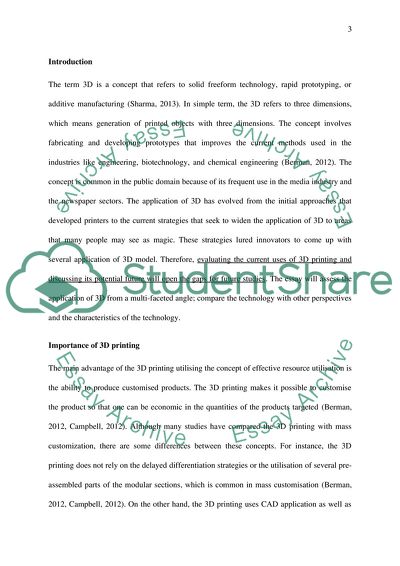Cite this document
(The Uses and Future of 3D Printing Essay Example | Topics and Well Written Essays - 1500 words - 1, n.d.)
The Uses and Future of 3D Printing Essay Example | Topics and Well Written Essays - 1500 words - 1. https://studentshare.org/technology/1877719-evaluate-the-current-uses-of-3d-printing-discuss-the-potential-future-of-3d-printing-based-on-current-issues-identified-in-the-literature
The Uses and Future of 3D Printing Essay Example | Topics and Well Written Essays - 1500 words - 1. https://studentshare.org/technology/1877719-evaluate-the-current-uses-of-3d-printing-discuss-the-potential-future-of-3d-printing-based-on-current-issues-identified-in-the-literature
(The Uses and Future of 3D Printing Essay Example | Topics and Well Written Essays - 1500 Words - 1)
The Uses and Future of 3D Printing Essay Example | Topics and Well Written Essays - 1500 Words - 1. https://studentshare.org/technology/1877719-evaluate-the-current-uses-of-3d-printing-discuss-the-potential-future-of-3d-printing-based-on-current-issues-identified-in-the-literature.
The Uses and Future of 3D Printing Essay Example | Topics and Well Written Essays - 1500 Words - 1. https://studentshare.org/technology/1877719-evaluate-the-current-uses-of-3d-printing-discuss-the-potential-future-of-3d-printing-based-on-current-issues-identified-in-the-literature.
“The Uses and Future of 3D Printing Essay Example | Topics and Well Written Essays - 1500 Words - 1”. https://studentshare.org/technology/1877719-evaluate-the-current-uses-of-3d-printing-discuss-the-potential-future-of-3d-printing-based-on-current-issues-identified-in-the-literature.


